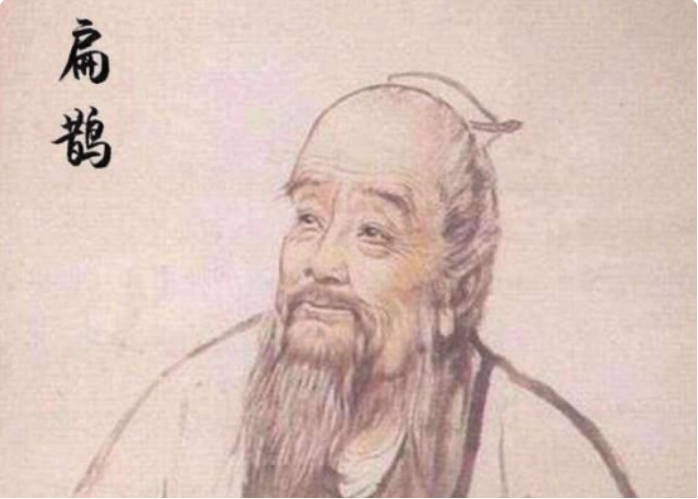
Bian Que was a native of the State of Qi during the Warring States Period. He was widely regarded as a pioneer among medical physicians in ancient China. His original name was Qin Yueren, but he became so well-known for his medical skills that people started calling him Bian Que after a legendary doctor from the time of the Yellow Emperor.
According to one legend, when Bian Que was young, he ran an inn (客栈). An older guest named Chang Sangjun recognized Bian Que’s good qualities and decided to teach him medicine. Chang Sangjun gave Bian Que a book and some herbs, telling him to take the herbs with a special liquid for 30 days. After doing this, Bian Que gained the ability to understand the secrets of nature and see through the human body. He kept this ability secret and used it to diagnose (诊断) patients by feeling their pulse.
Bian Que is considered “the father of traditional Chinese medicine” and made significant contributions to its development. It is believed that he wrote “Nan Jing”, a classic book on medical problems in traditional Chinese medicine. Bian Que practiced medicine in many states and was an expert in various fields, including gynecology, ophthalmology, otorhinolaryngology, and pediatrics.
Bian Que developed his medical skills by learning from other doctors and inventing his own methods. He created the “Four-step Diagnostic Method”, which includes:
Observing: Looking at patients’ tongues and appearances.
Listening: Paying attention to their voice and breathing patterns.
Inquiring: Asking about their physical conditions and symptoms.
Pulse-taking: Feeling their pulse.
This method is still a foundation for diagnoses in traditional Chinese medicine today. Bian Que was considered by many to be the most knowledgeable expert in pulse diagnosis. Now, calling a Chinese physician a “living Bian Que” is the highest compliment one could give.
1.1.Why did people start calling Qin Yueren by the name of “Bian Que”?
A Because he was a very skilled innkeeper.
B Because he wrote a famous medical book called “Nan Jing”.
C Because his medical skills were so remarkable.
D Because he invented the “Four-step Diagnostic Method.”
解析:选C。细节理解题。根据第一段的“he became so well-known for his medical skills that people started calling him Bian Que after a legendary doctor from the time of the Yellow Emperor”可知,由于秦越人医术高超,被认为是神医,所以当时的人们借用了上古神话的黄帝时期神医“扁鹊”的名号来称呼他。故选C。
2.2. What did Bian Que do with the ability that Chang Sangjun gave him?
A He published it in a book.
B He used it to diagnose patients.
C He shared it with other doctors.
D He demonstrated it publicly.
解析:选B。细节理解题。根据第二段的“He kept this ability secret and used it to diagnose patients by feeling their pulse.”可知,扁鹊按照长桑君的指示,坚持按要求喝了30天长桑君给的东西后,他突然发现自己有了“透视眼”,能把五脏六腑的病症看看得一清二楚。于是他在当地成为了一位大夫,开始诊断病人。故选B。
3.3. Which of the following is NOT a part of Bian Que’s “Four-step Diagnostic Method”?
A Monitoring patients’ blood levels.
B Listening to patients’ breathing.
C Asking about patients’ symptoms.
D Taking patients’ pulse.
解析:选A。细节理解题。根据文章内容可知,扁鹊的“四诊法”包括望(观气色)、闻(听声息)、问(询问症状)和切(摸脉象),其中并未提及监测他们的血液水平。故选A。
4.4. What can we know about Bian Que’s contributions to medicine?
A Bian Que was the only expert in traditional Chinese medicine.
B Bian Que wrote the only book on traditional Chinese medicine.
C Bian Que was not interested in learning from other doctors.
D Bian Que’s methods of diagnosis are still used in modern times.
解析:选D。推理判断题。根据最后一段的“This method is still a foundation for diagnoses in traditional Chinese medicine today. Bian Que was considered by many to be the most knowledgeable expert in pulse diagnosis.”可知,扁鹊创造的“四诊法”一直为中医所沿用,至今仍是中医辨证施治的重要依据。故选D。